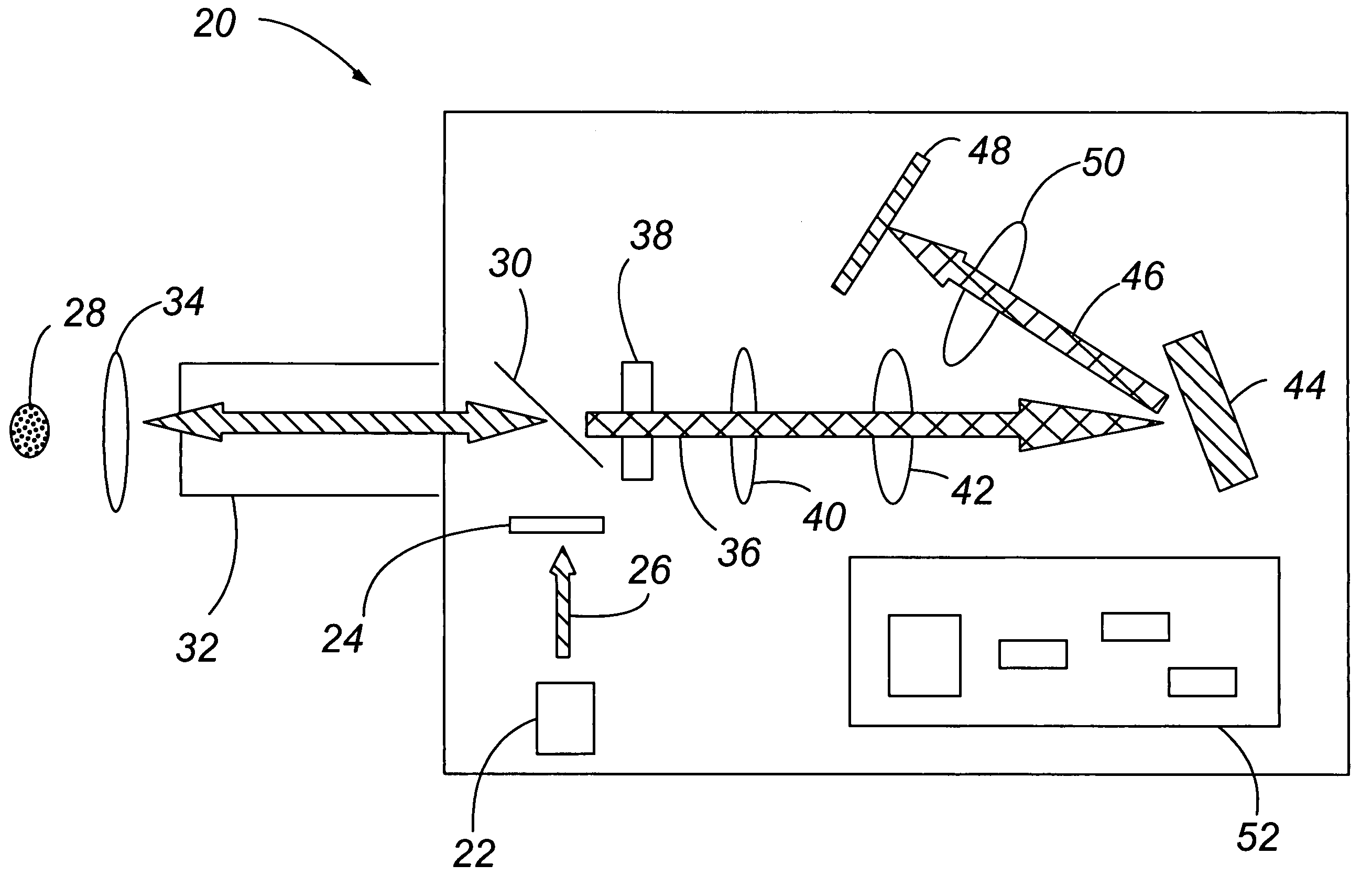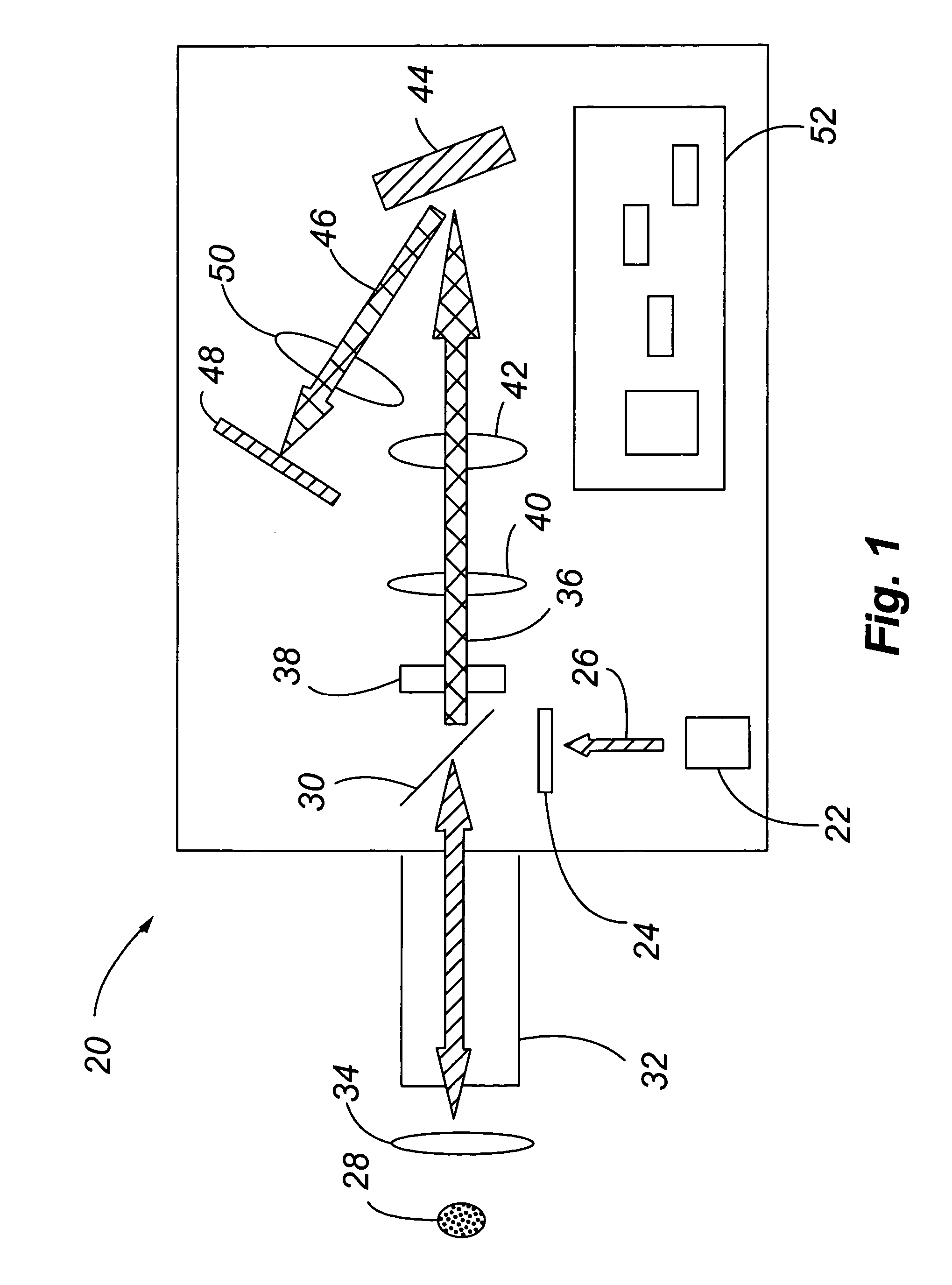Raman spectrometer
a raman spectrometer and scatter light technology, applied in the field of spectroscopy, can solve the problems of reducing or adversely affecting the precision and affecting the accuracy of raman scatter light measurements, and not always achieving uniform, predictable results
- Summary
- Abstract
- Description
- Claims
- Application Information
AI Technical Summary
Benefits of technology
Problems solved by technology
Method used
Image
Examples
Embodiment Construction
[0048]FIG. 1 shows one embodiment of a Raman spectrometer 20 according to the present invention. As shown in FIG. 1, the Raman spectrometer comprises an excitation source 22. The excitation source 22 typically comprises a laser light source. In one embodiment, for example, the excitation source 22 comprises a diode laser. A diode laser, for example, is capable of providing a plurality of wavelengths from the excitation source 22. The spectrometer 20 further comprises a filter 24. The filter 24 filters the output of the excitation source 22, such as removing spurious emissions from the excitation source 22.
[0049]The spectrometer 20 further comprises a means for directing the incident beam 26 toward a sample 28. In the embodiment shown in FIG. 1, for example, the means for directing the incident beam 26 toward the sample 28 comprises a dichroic beam-splitter mirror 30. However, the incident beam 26 may be directed at sample 28 without any intervening instrument components being locate...
PUM
| Property | Measurement | Unit |
|---|---|---|
| diameter | aaaaa | aaaaa |
| diameter | aaaaa | aaaaa |
| Raman spectrum | aaaaa | aaaaa |
Abstract
Description
Claims
Application Information
 Login to View More
Login to View More - R&D
- Intellectual Property
- Life Sciences
- Materials
- Tech Scout
- Unparalleled Data Quality
- Higher Quality Content
- 60% Fewer Hallucinations
Browse by: Latest US Patents, China's latest patents, Technical Efficacy Thesaurus, Application Domain, Technology Topic, Popular Technical Reports.
© 2025 PatSnap. All rights reserved.Legal|Privacy policy|Modern Slavery Act Transparency Statement|Sitemap|About US| Contact US: help@patsnap.com



